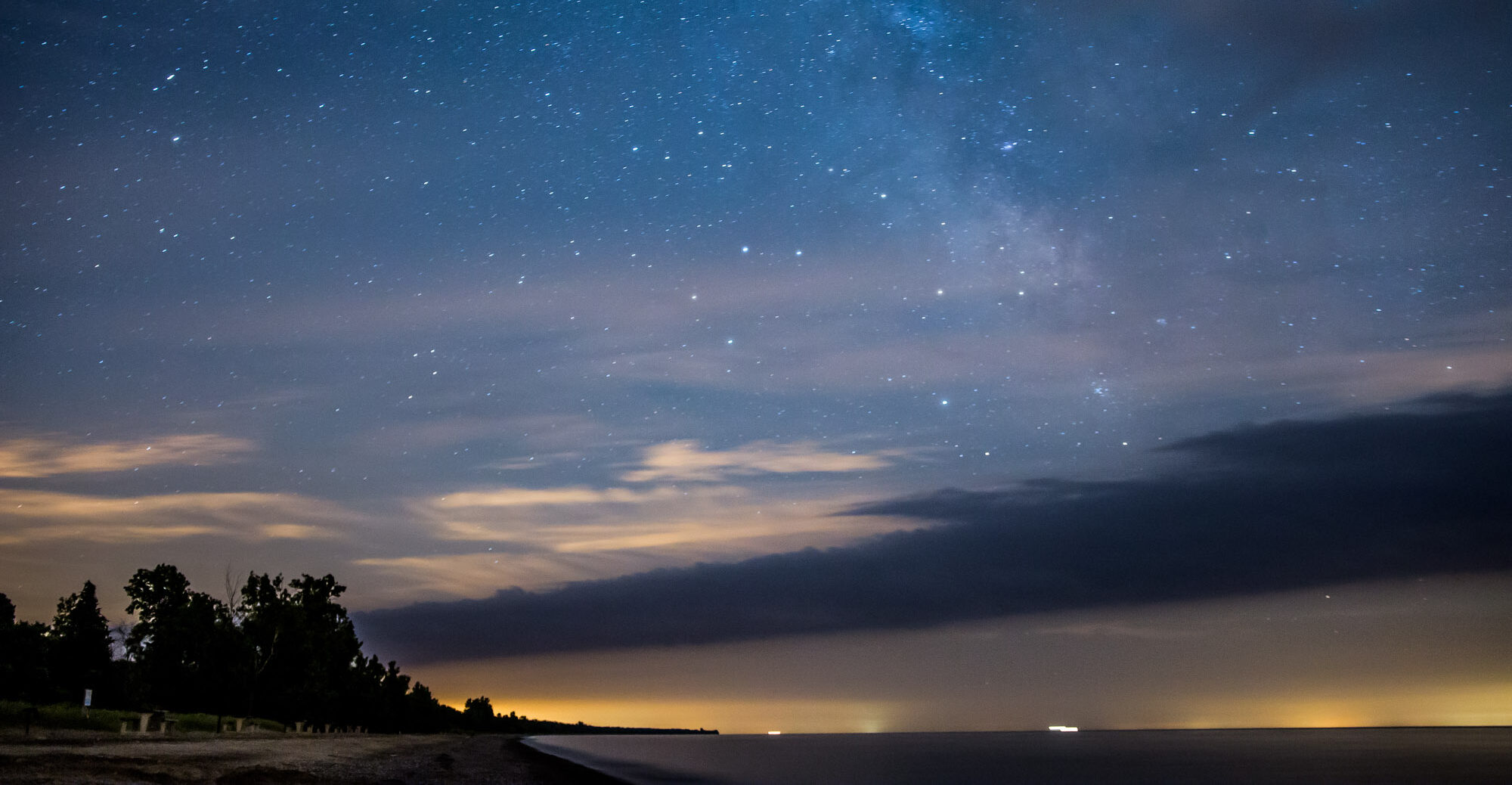Did you know? Point Pelee National Park is a Dark Sky Preserve and is one of the best places in Canada to explore the night sky.
Dark-Sky Preserves are protected areas that make a special commitment to protect and preserve the night, reducing or eliminating light pollution in all forms and Point Pelee National Pak is one of them.
Many plants, wildlife and insects rely on darkness to forage, breed and navigate so protecting the dark sky not only provides a magical experience for you, but it also protects ecosystems.
Parks Canada protects more dark skies than any other agency or jurisdiction in the world. In Canada, the Royal Astronomical Society of Canada decides which protected areas can be known as Dark-Sky Preserves, Urban Star Parks, and Nocturnal Preserves.
Designated as a Dark Sky Preserve in 2006, the park is committed to protecting the night-time environment from the effects of artificial lighting. As a result, visitors to the park, located in Leamington, Ontario, can experience the magic of the dark skies at by exploring the park after dark.
On specific nights listed in the park’s schedule, visitors have the opportunity to stay late and experience the park at night. The park stays open until midnight, allowing visitors to enjoy the best stargazing experience. A seasonal star chart is available at the front gate upon arrival.
How To Enjoy A Dark Sky Night At Point Pelee
To ensure the best stargazing experience, there are a few things to keep in mind.
Check the weather. Simple and straightforward. Check to see not only if it will be raining or cold or not, but even if cloud cover will dampen the experience
Take along a star chart or download a stargazing app. Get help identifying what exactly it is you’re looking at or for. SkySafari Pro is a great paid app, but SkyView Lite is fantastic and free for both Android an Apple users.
Bring a pair of binoculars or a telescope. Don’t you want a closer look? You’d be amazed at the detail you could possibly see with a good set of binoculars or telescope.
Use red cellophane over your flashlight. This helps to preserve your night vision. Plus, if you want to have the best view possible, head to West Beach or the Visitor Centre parking lots at Point Pelee – they’re the best car-accessible stargazing locations in the park.
Things To Look For In The Sky
Have you never been stargazing before? Not sure what to look for? Don’t worry! The Canadian Space Agency has put together a simple list of things you’re likely to see in the sky on a clear night in a Dark Sky Preserve.
Stars. The night sky is filled with bright dots, most of which are stars. They can vary in colour and brightness. Stars appear to twinkle because Earth’s atmosphere is in motion and jostles the light emitted by stars.
Shooting stars. If you are lucky, you might spot a shooting star in the night sky! These are small grains of cosmic dust that burn up in our atmosphere. You could spot one at any time, but they are especially abundant during meteor showers.
Constellations. These groups of stars have been given names based on their shapes. Some recognizable constellations include Orion (and his famous belt) and the Big Dipper.
Planets. Some of the bright dots in the sky are actually planets, and one neat way to tell them apart from stars is to see if they’re twinkling! Planets do not twinkle in the sky.
The Milky Way. If you are in a dark location, you might see a whitish hazy lane streaking across the sky. This is the disk of our galaxy, the Milky Way! The summer months are the best time of the year to observe the Milky Way from the northern hemisphere.
Satellites. See a little dot streaking through the sky? It’s not likely E.T. returning home, but a satellite orbiting the Earth. Heck, it could even be the International Space Station, which NASA provides coordinates and times of when and where you’ll be able to spot it.










